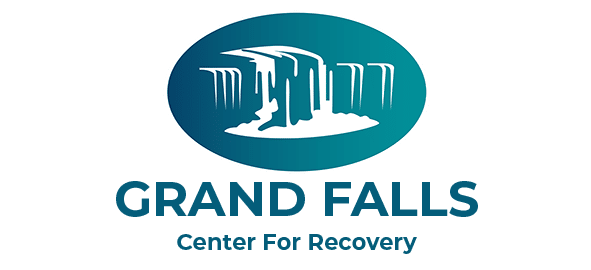Post-traumatic stress disorder (PTSD) can significantly impact an individual’s quality of life, relationships, and overall well-being. For those seeking a focused and supportive environment to manage PTSD, rehab programs often become a vital resource. These programs provide access to comprehensive treatment approaches that not only address the symptoms of PTSD but also help individuals regain control over their lives.
This article will cover some of the most effective treatment options for PTSD commonly offered in rehab environments. Whether you or someone you care about is exploring rehabilitation, understanding these methods is the first step toward recovery and healing.
Understanding PTSD Treatment in Rehab
Rehabilitation centers that specialize intake a holistic approach to healing. These programs aim to address both the mental and physical impacts of PTSD, offering a structured path to recovery. They are equipped with specialized staff, evidence-based therapies, and supportive communities, all of which play a critical role in breaking free from the debilitating effects of the disorder.
Now, let’s explore the best PTSD treatment options offered in a rehab setting.
Cognitive Behavioral Therapy for PTSD
The Foundation of PTSD Treatment
Cognitive Behavioral Therapy (CBT) is widely regarded as one of the most effective and evidence-based treatments for PTSD. It focuses on helping individuals identify and change unhelpful patterns of thought that contribute to their symptoms.
How Does It Work?
During sessions, therapists assist patients in:
- Recognizing negative thought patterns.
- Developing healthier ways to think about and respond to their trauma.
- Gradually decreasing avoidance behaviors that reinforce fear and anxiety.
CBT has been extensively studied and proven effective in reducing PTSD symptoms, making it a foundational component of many rehab programs.
Eye Movement Desensitization and Reprocessing
Targeted Trauma Relief
Eye Movement Desensitization and Reprocessing (EMDR) is a unique, structured therapy designed to help individuals process and resolve traumatic memories. It is particularly effective for those struggling with deeply ingrained trauma.
How Does It Work?
During EMDR sessions, a therapist guides the individual through recalling traumatic experiences while engaging in specific rhythmic eye movements. These movements help the brain process trauma and reduce its emotional intensity.
This treatment is often highlighted in rehab settings because of its ability to provide relief even for individuals with severe PTSD symptoms.
Group Therapy for Connection and Healing
Building a Supportive Network
For many dealing with PTSD, isolation becomes a defense mechanism, but it often worsens symptoms. Group therapy provides an environment where individuals can connect with peers who understand their struggles.
Benefits of Group Therapy Include:
- Validation and support from others who have experienced similar trauma.
- Shared strategies for coping with symptoms.
- A stronger sense of community, which diminishes the feeling of isolation.
Rehab facilities typically integrate group therapy sessions as they encourage honest sharing in a secure environment.
Medication to Support Symptom Management
When Symptoms Are Overwhelming
While therapy builds long-term coping mechanisms, medication can play a key role in managing immediate symptoms of PTSD, such as insomnia, anxiety, or depression. Rehab professionals often work closely with psychiatrists to create an optimized medication plan.
Commonly Prescribed Medications Include:
- Selective Serotonin Reuptake Inhibitors (SSRIs): Often used to treat depression and anxiety symptoms.
- Prazosin: Known to help reduce nightmares and improve sleep in PTSD patients.
- Mood Stabilizers: To support individuals with heightened emotional reactivity.
It’s important to note that medication is often most effective when paired with therapeutic interventions for holistic treatment.
Mindfulness and Holistic Therapies
The Role of Relaxation Practices
Rehab programs frequently incorporate mindfulness and holistic approaches to complement traditional therapies. Techniques such as mindfulness meditation, yoga, and deep-breathing exercises can help reduce PTSD symptoms by addressing stress and providing a sense of calm.
Key Benefits of Mindfulness Practices:
- Improved emotional regulation.
- Reduced hyperarousal symptoms.
- Greater mastery over physical triggers, such as rapid heartbeat or shallow breathing.
These techniques often serve as valuable tools for maintaining long-term recovery outside the rehab environment.
Tailored Treatment Plans for Individual Needs
Personalized Paths to Recovery
At the heart of rehab programs is individualized care. Each person’s experience with PTSD is unique, and effective treatment plans take that into account. Upon admission, assessments are conducted to design a customized treatment approach, utilizing the therapies that best align with an individual’s needs and preferences.
Start Your Healing Journey
Overcoming PTSD is challenging, but with the right combination of therapies, support, and determination, recovery is possible. A rehab center offers the space, expertise, and community needed to facilitate that healing.
If you or a loved one is ready to begin the process of recovery, Grand Falls Recovery Center can help. Reach out to our team today to take the first step toward reclaiming your life. Together, we can walk through this journey of healing.

